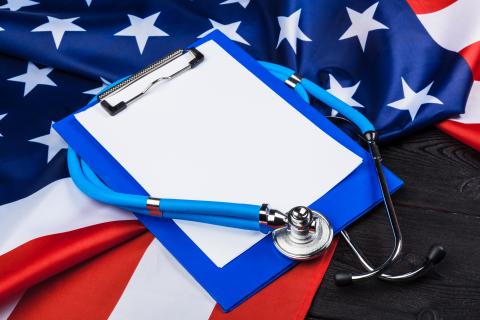
The US Food and Drug Administration (US FDA) has proposed to amend the medical devices Quality System Regulations (QSR) under 21 CFR 820. The current QSR regulations date to 1978 and have been amended only once in 1996. This action, if implemented, will align 21 CFR 820 more closely with ISO 13485:2016, the international consensus standard for devices widely accepted by global Regulatory Authorities. The FDA believes that globally harmonizing the device regulation will help provide consistent, safe, and effective devices, contributing to public health through timely access for patients. Harmonizing differing regulations would remove duplicative Regulatory requirements and impediments to market access and remove barriers to patient access and costs.
The proposed Quality Management System Regulation (QMSR) has certain additional definitions, clarifying concepts, and requirements incorporated to maintain alignment and consistency with the Federal Food, Drug and Cosmetic Act (FD&C) while harmonizing with the ISO standard. The FDA aims to reduce the redundancy caused by complying with 21 CFR and 820 and ISO 13485 for other regions and thereby reducing the inefficiency. The other CFR and guidance documents referencing 21 CFR 820 would need an update to align with the QMSR. The QMSR has retained certain elements of QSR, has dropped a few elements, and modified some more clauses to align with ISO 13485. The QMSR regulations will be applicable to:
- Finished medical device product
- Components of finished medical device
- Parts of finished medical device
The QMS requirements under ISO 13485 standard and the current 21 CFR 820 have substantial similarities. The differences do exist in terms of document controls, labeling and packaging controls, record, and servicing requirements, such as:
Current part 820 | ISO 13485 requirements | Proposed rule |
| Subpart D—Document Controls | Clause 4. Quality Management System | 820.35. |
| Subpart K—Labeling and Packaging Control | Clause 7. Product Realization | 820.45. |
| Subpart M—Records | Clause 4. Quality Management System | 820.35. |
| Subpart N—Servicing | Clause 7. Product Realization | 820.35. |
Details of the Proposed Changes
Terms & definitions:
The terms and definitions that do not appear in ISO 13485 but are necessary for alignment with the FDA and for implementation are proposed to be retained with minor changes. Some of the changes are:
- Device Master Record (DMR): To be removed
- Manufacturer: To be retained
- Customer: To be added
Control of Records:
The FDA proposes to include signature and date requirements for records subject to Clause 4.2.5 of ISO 13485. Records can be both hard copies signed, dated, and electronic records with electronic methods for signing and dating best suited for the organization. The information needed for medical device reporting shall be captured on certain records of complaints and servicing activities. The firms shall document the Unique Device Identification (UDI) for each medical device or batch of medical devices in accordance with 21 CFR part 830 in its records.
Device Labeling and Identification:
The FDA proposes to retain requirements of inspection of labels by the manufacturer from 21 CFR 820. The manufacturers and the stakeholders would have to comply with ISO 13485 7.5.1 and the proposed 21 CFR 820.45 once the proposed regulations are finalized and in effect.
Risk Management:
Risk management as per QSR is related to the design of the product, while ISO 13485 has requirements for risk management throughout the life cycle of the product. The FDA proposes to take a similar approach.
Traceability:
The FDA has proposed to add a requirement of traceability as per clause 7.5.9.2 of ISO 13485 to devices that support or sustain life to be included along with implantable devices. Such products currently are subject to similar requirements in 21 CFR 820.65 for traceability; however, in ISO 13485, only implantable devices are subject to this requirement.
Comparatively, ISO 13485 has a greater emphasis on Risk Management and is closely integrated with ISO 14971, the risk management standard for medical devices. (QSR). Though the proposed QMSR is harmonized with ISO 13485, the US FDA would remain as the inspection authority, and the Agency will not be issuing any ISO 13485 certificate after the QMS audit, nor would it be accepting the ISO 13485 certificates as an alternative to the US FDA audit.
The proposed changes are welcomed by the industry as they would reduce trade barriers and implementing a unified QMS compliant with both regulations would be easy. However, a period longer than proposed one (01) year would be good for a smooth transition. The provisions like not requiring an ISO 13485 certification as a pre-requisite in favor of small businesses and the strengthened emphasis on risk management might prove to be real challenges for the small and mid-sized manufacturers.
This proposed rule, if adopted, will reduce the time to market devices due to the international harmonization of medical device regulation. The FDA proposed that the final rule based on the proposal will be effective one (01) year after its date of publication in the Federal Register. The intention is to provide adequate time for the medical device manufacturers to make necessary changes to comply with the requirements of ISO 13485.
The FDA stated that it would be replacing its current approach-Quality System Inspection Technique (QSIT), after QMSR implementation. This would involve the collection of information to support observations noted during the inspection and those included on a Form FDA 483, as appropriate and necessary. There would be no issuance of certificates of conformance to ISO 13485, and manufacturers certified for ISO 13485 are not exempted from the FDA inspections.
Does your medical device QSR fall under 21 CFR 820? Have you aligned 21 CFR 820 with ISO 13485 standard proposed by the FDA? Reach out to a regulatory and quality professional today!









